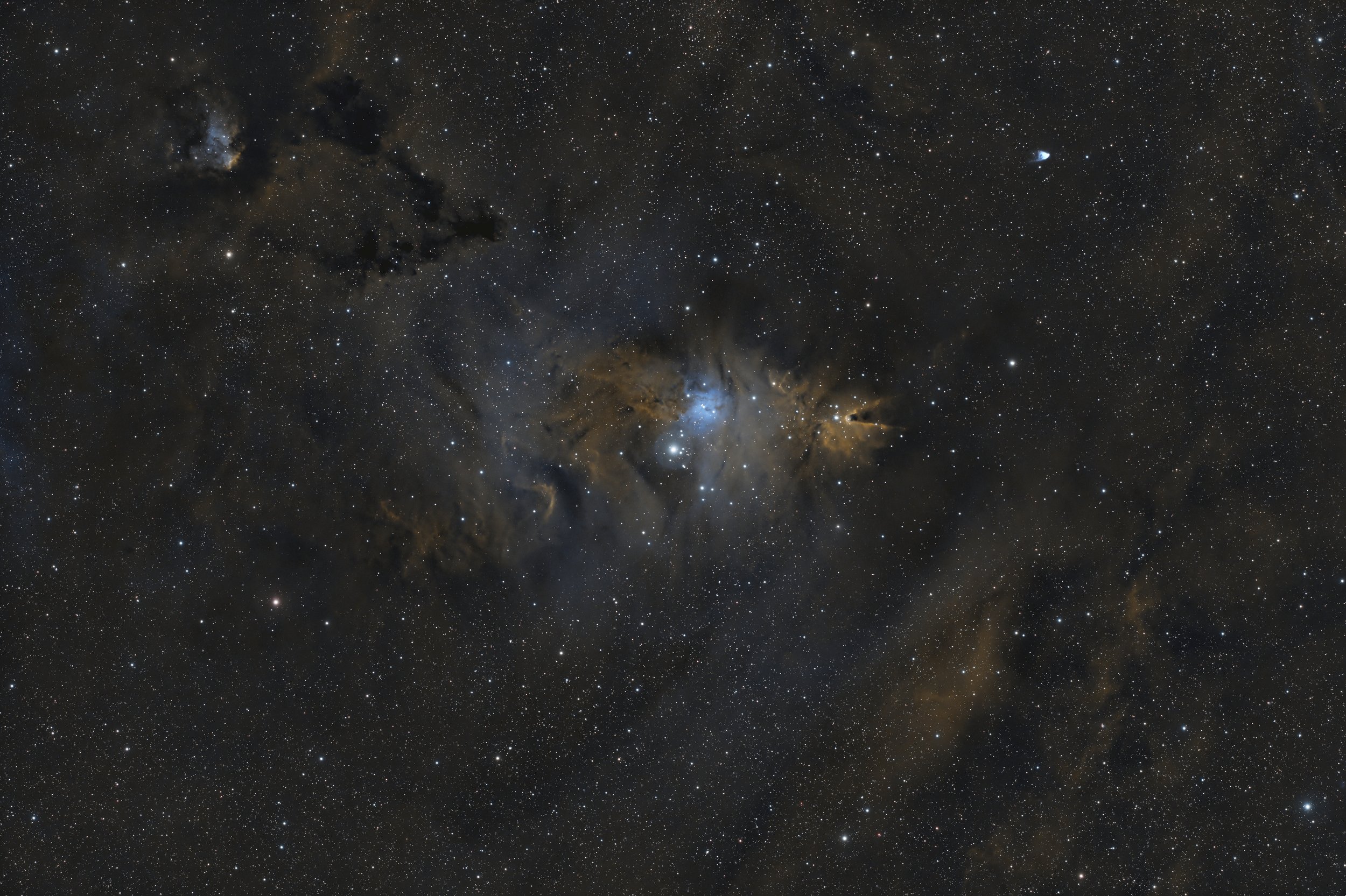
Images
Sh2-261
Sharpless 2-261, also known as Lower's Nebula, is a faint emission nebula located in the constellation Orion. Sh2-261 is an ionised hydrogen (HII) region energised by the ultraviolet radiation of nearby hot stars. This nebula lies roughly 3,300 light-years from Earth and spans about 50 light-years in diameter.
Virgo Cluster
The Virgo cluster is a large area in the sky, packed with galaxies. The famous Markarian Chain may be the best known part of it, but there are many more pretty well visible galaxies around in the area. Explore this very wide-field recording of this exciting part of the night-sky.
NGC884, NGC869
A beautiful double cluster of NGC884 and NGC869 in the constellation Perseus. These objects are pretty bright and were already discovered by the ancient Greeks. Here captured using an OSC camera.
IC59, IC63
A tricky target to image. The super bright star Gamma Cassiopeia, surrounded by the hydrogen-rich but faint nebulae IC59 and IC63. A combination of broadband and narrowband images allowed capturing both aspects.
Comet C/2022 E3 (ZTF) 2/2
On 01 February the comet reached its closest proximity to Earth. A few hours of clear skies allowed to capture this moment as a second image
Comet C/2022 E3 (ZTF) 1/2
Comet C/2022 E3 (ZTF) is one of the brighter comets this year. It is still increasing in brightness, and while not likely, it could still possibly become visible with the naked eye. This post describes the image itself and also contains an animation of the comet moving across the backdrop of the stars.
C/2021-A1 Comet Leonard
Bright comets are seldom appearances in our solar system. Comet Leonard was one of the most striking examples this year. Just days before it would become at its brightest and before it would cross the ecliptic, this image was shot in the early morning hours.
Caldwell 34
The Veil Nebula in HOO was chosen as the first object to photograph using the new RST-135E mount. This ultra-portable mount is super-easy to setup and can be used without counterweights or balancing. First light and lessons learned on a beautiful target.
Sh2-190 + Sh2-199
A new reducer for the FSQ-106 turned the scope into a 380mm at f/3,6 astrograph. Together with the ASI6200MM a perfect combination to photograph the beautiful Heart and Soul Nebulae in narrowband.
Sh2-129 - Flying Bat and Squid Nebula
Recently (2011) the Flying Squid Nebula has been discovered right within the Flying Bat Nebula (Sh2-129). The very weak OIII object is hard to image and with almost 30h of total exposure this has been one of the most challenging objects so far.
Sh2-229 | C31
IC405 is an interesting combination of both a reflection and emission nebula that emits strongly in H-alpha. The double-star AE Aurigae shines brightly in the middle and illuminates vast clouds of hydrogen gas.
Sh2-275 | C49
The very large emission nebula NGC2237, also known as Rosette Nebula, is part of an even much larger area of nebulosity in the constellation Monoceros.



















